How to Clean an Engine Bay: 10 Tips & Tricks
-
Kristin Hitchcock
- Last updated:
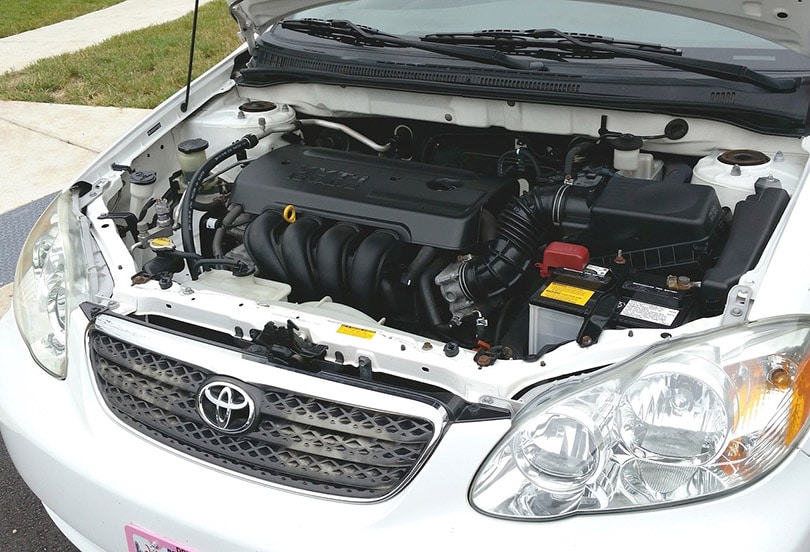
You won’t typically need to clean your engine bay all that much. However, if you want to extend the life of your engine, then cleaning it occasionally is often necessary. The engine bay protects your car’s engine. Therefore, it is vital to keep it well-maintained. Otherwise, it may damage the engine and other components, leading to lengthy and expensive repairs.
Luckily, cleaning your engine bay isn’t difficult. It only takes a few simple steps, though you will need specific tools. In many cases, this job is performed by a mechanic or another professional. However, many DIYers prefer to care for their own car, and cleaning your engine bay isn’t complicated.
Required Tools
You’ll need to collect various tools to properly clean your engine bay. Luckily, most of these tools are things you probably already have lying around your house, especially if you work on cars regularly.
- Absorbent pads
- Compressor
- Degreaser
- Drip pans
- Dust mask
- Electrical Tape
- Garden watering wand
- Gloves
- Hose
- Microfiber cloth
- Plastic bags
- Safety glasses
- Spray bottles
- Stiff fiber-bristled brushes
- Wire brush
- Wrenches
- Zip ties
Toop 10 Tips & Tricks on How to Clean an Engine Bay
1. Decide on a Location
You’ll first need to decide on a location appropriate for this work. Your engine bay will often contain toxic materials for you and the environment. Therefore, you’ll need to ensure that these chemicals do not enter your water supply. Throughout this article, we’ll explain how to safely collect and dispose of these materials.
However, you can also do this work at a self-serve car wash. At these locations, they are required to collect all water for disposal. Therefore, you’ll have to do less work in this case.
2. Ensure the Engine is Cool
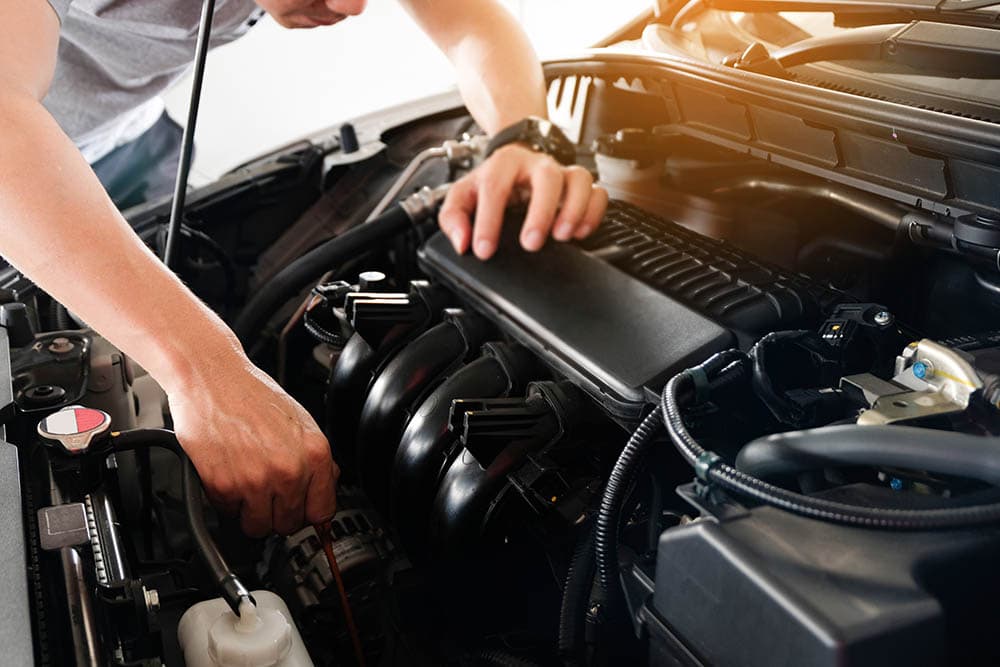
If you’ve recently driven the car, you’ll need to wait for the engine to cool down. Spraying water on hot pieces will cause warping and cracking. Hot parts can also melt plastic and burn your hands. Therefore, the engine must be cool enough to handle and not warp the plastic. If your engine is very hot, lifting the hood can speed up the process.
You can wash the outside of the car while waiting if it needs to be cleaned. Otherwise, we recommend finding another way to keep yourself busy.
3. Tighten all Caps
Before you get busy, you’ll want to ensure that all caps and covers are screwed on very tightly. You don’t want any water getting into the engine, as this can cause serious issues.
4. Protect Electrical Systems
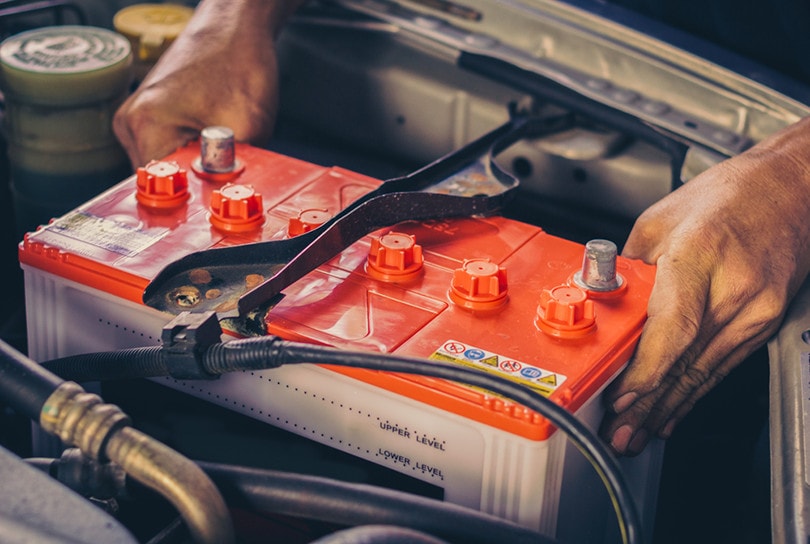
Next, you should disconnect the battery and remove it. You don’t want the battery getting wet. However, keep in mind that this may erase some of the saved information in newer vehicles, such as saved radio stations. (You cannot leave the power hooked up while spraying the engine bay with water, though.)
Ensure that all the different parts of your engine’s electrical system are protected by using electrical tape and zip ties. All engines will have these parts, including the alternator, fuse box, spark plugs, and similar components.
Exposed filters should also be protected, as these can be damaged by high-pressure water.
5. Equip Your Gear
Before you move forward, you’ll need to put on your personal safety gear. As we’ve stated, these engines can contain a lot of toxic materials, and you don’t want any of that coming into contact with your skin. Therefore, you should at least wear safety glasses and a dust mask. Rubber gloves can help you protect your hands.
You’ll need to spread absorbent pads on the floor and a drip tray to help catch potentially contaminated water. (Using a car wash eliminates this need, though.)
6. Clean Up Dry Materials
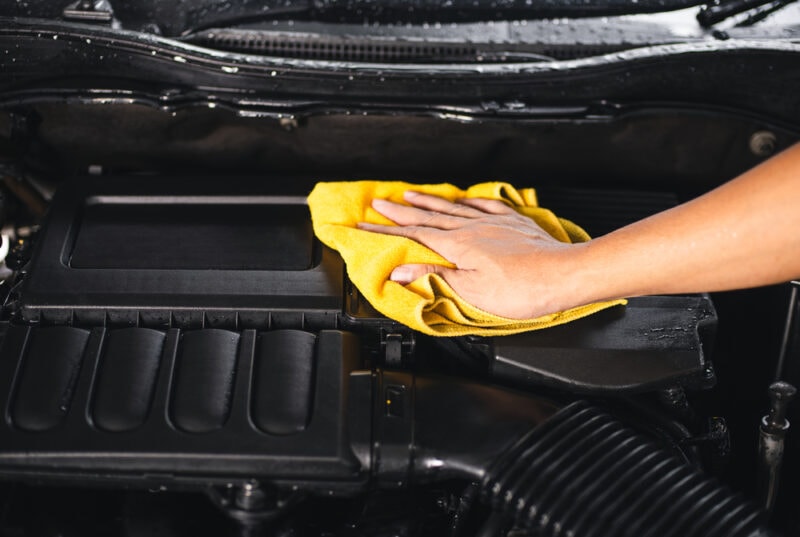
Once the water gets going, it can get messy. Therefore, you’ll want to remove as much of the dry materials as possible before you turn on the water. Use a vacuum to loosen grime and suck up any loose stuff. Next, use your brushes to loosen as much as possible—and then vacuum again. Fiber brushes are best for plastic surfaces, while we recommend wire brushes for metal.
Use both types as necessary to loosen as much dirt as you can. Be sure to use a drip tray to collect as much of the material as possible while you brush.
7. Use Water
Once you’ve brushed as much as possible, it’s time to use water. First, use warm water in a spray bottle to loosen up the dirt that’s still present on the engine bay. You’ll want to minimize the water while being sure to get everything as wet as possible. This helps the degreaser work properly, though you don’t want to completely soak everything in the engine bay.
Next, add the degreaser and spray it evenly onto the engine bay. If an area is dirtier, be sure to add an extra degreaser. You should allow it to sit for about 10 minutes, though you should read the directions to ensure. Different products can have slightly different instructions.
While waiting, turn your shop vac over to wet operation and empty it.
8. Rinse
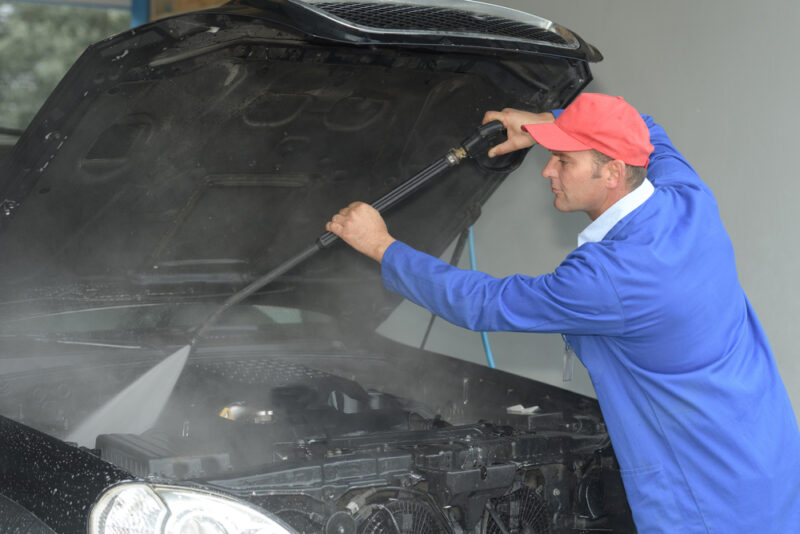
Now, use a low-pressure hose to gently rinse the degreaser. Usually, self-serve car washes are a bit more high-pressure than those at home. Therefore, while this isn’t a problem at home, you’ll need to make sure to carefully use car washes to prevent triggering high pressure.
If you’re at home, you’ll have to use absorbent pads and a shop vacuum to collect the water that rinses. This water can cause serious problems to the environment. Therefore, we don’t recommend letting it flow freely.
Once you’ve sprayed it well, wipe the entire engine bay with a cloth. Re-clean any places that need it, rinsing them again as necessary.
Seal any collected water into plastic garbage bags for exposure later.
9. Dry Well
Finally, dry the whole engine well and let it sit with the hood open for at least an hour. The longer, the better, as you want the whole engine to be completely dry.
If the electric parts of the engine need to be cleaned, then you can clean them by hand with a brush and cloth after the rest of the engine is clean.
Conclusion
Cleaning your car engine bay is pretty straightforward and easy. However, it does take quite a bit of equipment and time. Therefore, many people choose to have a mechanic or professional clean their engine. It is possible to do it at home, though. For DIYers and those that like to take care of their own car, it isn’t too much of an issue to clean your engine bay.
One of the most important things to remember is that engine bays contain toxic materials. Therefore, you’ll have to collect all of the water and dispose of it properly.
You Might Also Be Interested In:
- Can You Pressure Wash an Engine? The Surprising Answer!
- Most Popular Classic Cars
- Best Air Compressor for Tires
- What Is a Naturally Aspirated Engine?
Featured Image Credit: BruceEmmerling, Pixabay
Contents
